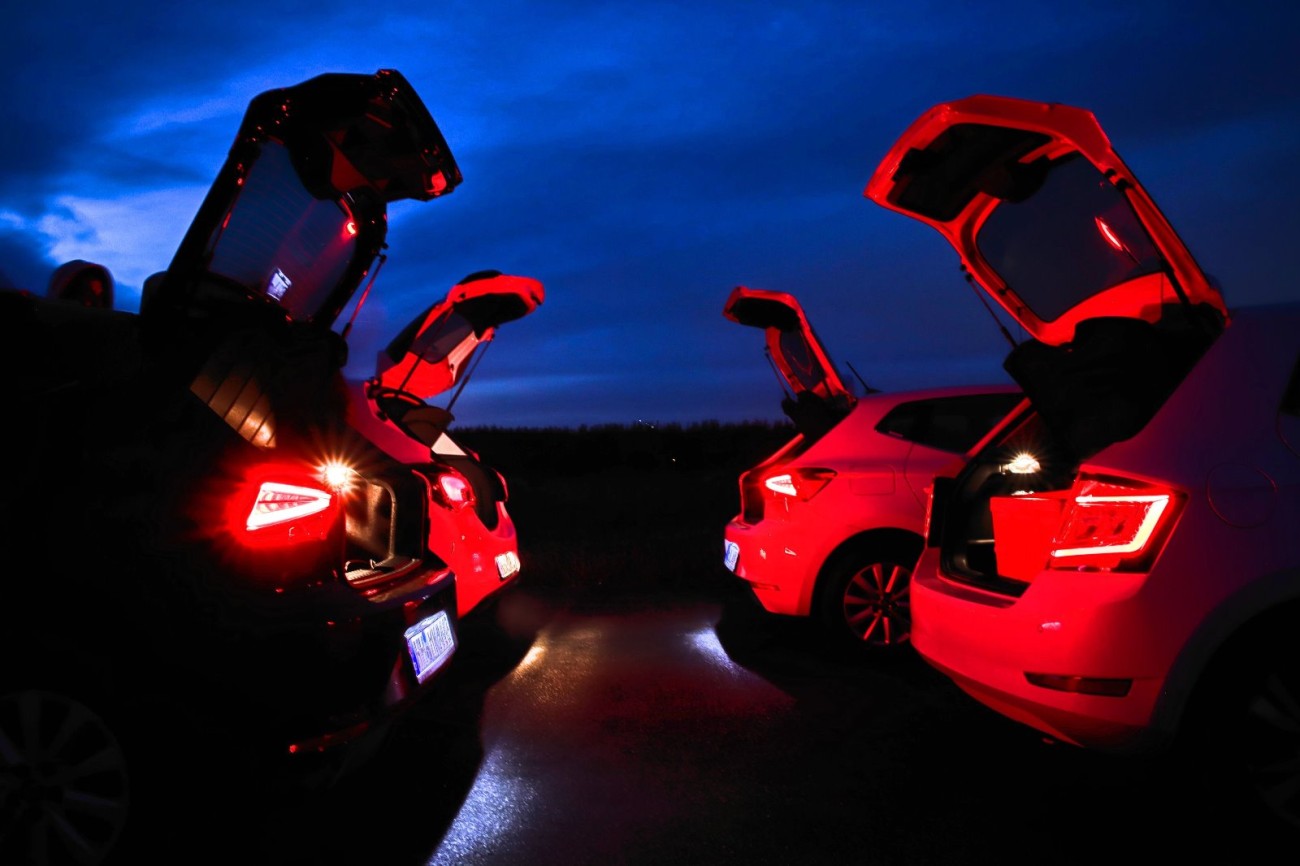In 1913 the first electric headlight was used in a motor vehicle. Since then, society and automotive lighting have changed dramatically. Social developments have always accompanied developments in headlight technologies and light sources (incandescent lamps, halogen lamps, gas discharge lamps, LEDs) for use in motor vehicles. In 1957, for example, the asymmetrical low beam was introduced, which is still used in Germany and Europe today. The asymmetrical low beam illuminates the lane as far as possible for the vehicle driver with minimal dazzling of oncoming traffic. Outside built-up areas, when there is no oncoming traffic, the high beam should be switched on to maximize the driver's range of vision.
From today's perspective, however, these two basic lighting functions are no longer sufficient to cope with today's road traffic challenges. The steadily growing density of traffic and information (even in the dark hours) creates new traffic scenarios for which optimal lighting conditions have to be researched so that these can be implemented using the headlights if required. The first light distributions have already been developed and regulated in this regard. There are different static low beam distributions for driving in the city, on the highway, and in bad weather conditions. In addition to static light distribution, dynamic light functions have been developed to react to changes in the area in front of the vehicle while driving. The glare-free high beam (gfHB – glare-free high beam) enables permanent high beam driving outside built-up areas and, by specifically dimming the oncoming traffic and the traffic ahead, reduces the glare potential to the low beam level. Another approach is the marking light, which directs the driver's attention by specifically illuminating relevant objects and enables greater detection distances. The dynamic cornering lights, by “shining into the bend”, ensure greater detection distances and the driver's eye behavior.
Since the dynamic light functions can mainly be used outside built-up areas, they are only a satisfactory solution for part of the road network. Due to increasing urbanization and the development of so-called “mega-cities”, a large part of the (night-time) traffic volume can be assigned to urban areas. However, dynamic lighting functions such as glare-free high beam and marker light are currently not allowed to be used here. Additionally, the existing stationary lighting also creates other traffic scenarios than, for example, on country roads or motorways. Even within urban areas, different street lighting systems generate different traffic scenarios, so that a single static urban light distribution is not sufficient to achieve the best possible lighting solution in the various scenarios.
The Laboratory of Lighting Technology takes on this problem and researches the optimization of adaptive headlight light distributions. For this purpose, the traffic area and the current lighting situation are analyzed. Various light distributions are optimized and validated for the various traffic scenarios from the analysis data and other findings from psychophysical investigations into objective and subjective perception.
In modern vehicles, more and more driving functions are taken over by the vehicle itself; these currently include automatic distance and lane-keeping assistants, automatic emergency braking assistants, and other functions intended to relieve the driver. The goal is the complete automation of the vehicle, so the driver does not have to intervene while driving. The Society of Automotive Engineers (SAE) divides the various levels of automation into five levels. From level 0 – no automation to level 5 – full automation. Various sensors such as RADAR, LIDAR, cameras, ultrasonic sensors, etc., are used to automate vehicles.
The Laboratory of Lighting Technology is researching the optimization of light distributions for camera systems, as these, like the human eye, are also sensitive in the visual wavelength range. To implement the higher levels, a robust and reliable perception of the environment under different weather and light conditions must be guaranteed. The laboratory’s research focuses on optimizing light distributions to ensure the detection of objects in traffic areas (pedestrians, traffic signs, other vehicles, etc.) under different light and weather conditions. In comparison to adaptive headlight systems, the investigation focuses not on the human being but on various camera sensors that are also characterized in the laboratory. The research results from adaptive headlight systems are also used to design the camera-optimized light distribution for the human driver.
In addition to the reliable detection of objects, communication with weaker road users is also one of the laboratory’s research areas. This includes, for example, recognizing the intention of whether a pedestrian wants to cross the street and has not seen the autonomous vehicle or conveying the intention of the highly automated vehicle to other road users utilizing light signals. In order to find the optimal signaling device, the Laboratory of Lighting Technology relies on real test subjects with real signaling devices and, additionally, on simulations using various VR headsets.
When developing new lighting systems in the automotive sector, the focus is always on people's visual perception. When developing new lighting functions, human behavior must therefore always be taken into account and examined. The Laboratory of Lighting Technology has carried out field tests under almost real conditions on the airfield in Griesheim or in real traffic for numerous years. Nevertheless, the investigation possibilities in field tests are usually very limited because either the reproducibility is challenging to control for several test subjects or because investigations into safety-relevant factors such as braking or evasive behavior by drivers cannot be implemented. For this reason, the Laboratory of Lighting Technology is researching new possibilities to investigate the influence of new types of lighting systems with the help of simulations in the laboratory.
So-called head-mounted displays (better known as virtual reality glasses) are particularly promising. These have been continuously developed in the past few years and offer the possibility to put users in simulated scenarios through a high degree of immersion. This can influence a large area of the user's field of vision, meaning the entire cockpit is displayed virtually. The possibility of free movement in a virtual space also offers the possibility of setting up pedestrian simulators in which future traffic concepts can be examined with highly automated vehicles.
The focus of research here is on developing new test methods with high photometric fidelity comparable to real-life tests.














